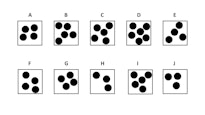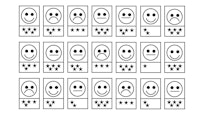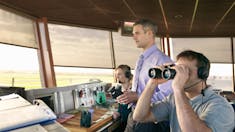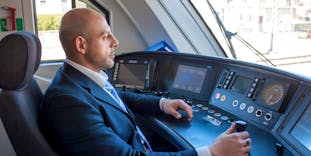MTA Train Operator Exams (2025 Study Guide)
All products and services featured are independently selected by WikiJob. When you register or purchase through links on this page, we may earn a commission.
- How to Become a Train Operator
- Essential Skills for a Train Operator
- What Are the Train Operator Exams? (Example Questions included)
empty
empty
empty
empty
empty
empty
empty
empty
- How to Prepare for the MTA Train Operator Exams in 2025
- Important Things to Remember About the Train Operator Exams
- Frequently Asked Questions
- Final Thoughts
How to Become a Train Operator
Becoming a train driver is a dream role for many people.
In 2017, a single recruitment drive by Transport for London (TfL) to fill 200 roles yielded 15,670 applicants.
As such, the hiring process for becoming an MTA train operator is extensive and competitive.
Essential Skills for a Train Operator
The primary function of a train driver is to get passengers to their destination safely and on time.
Therefore you will need:
- A strong understanding of safety awareness
- Discipline
- Dedication
- Customer service skills
- Respect for rules
- Self-management and time-keeping skills
- To be flexible, competency, adaptable and reliable
It is also a role that requires continuous professional development as rules, regulations and technology are constantly changing.
For those entering this role, you will have to complete a one-year training program involving a mixture of simulator, classroom and practical learning.
MTA train operator applicants will also need to:
- Be over the age of 21
- Pass a medical exam involving eyesight, color vision and hearing
- Complete a series of psychometric tests
- Prove electrical and mechanical knowledge
Prepare for MTA Train Operator Exam with JobTestPrep
What Are the Train Operator Exams? (Example Questions included)
The MTA train operator exams are a series of eight psychometric tests assessing your aptitude for different areas of the job role.
These psychometric tests are the first phase of recruitment. They help identify suitable candidates, rather than wasting the time of applicants who are not right for the role.
1. Train Driver Mechanical Reasoning Test
This test measures how well you understand mechanical concepts and how you apply them to real-life situations.
To pass this test, you will have to answer 36 multiple-choice questions focused on topics such as movement, pulleys, levers, forces and gears.
The questions accompany a diagram or illustration.
You will have 18 minutes to answer as many as you can.
2. Group Bourdon Test
The Group Bourdon Test is a psychomotor test that measures concentration and ability to observe under time constraints.
You will sit the test either on a computer or with a pen and paper.
The page or screen will have 25 columns split into sections. Each section will contain three to six dots arranged in different patterns.
Your task is to pick out the sections that only contain four dots.
There are five pages in total, and you have two minutes to work through each page or screen.
We have recreated a similar question here, but the real paper will have many more options over 25 columns.

Find the sections that contain only four dots:
3. Trainability for Rules and Procedures (TRP)
The TRP test assesses how well you understand and apply information and instructions.
There are two sections.
Part One assesses verbal and written aptitude. You will need to listen to an audio clip and read a document on a train operator topic before answering around 18 multiple-choice questions.
Make as many notes as you can when listening to the clip and reading the document, and try to remember as much as possible. When answering, you will not have access to your notes or the source material.
You have five minutes to make notes and seven minutes to answer the questions.
Part Two assesses your visual reasoning.
You will be presented with color-coded diagrams and a reference key on how to read them.
You will have eight minutes to answer a set of multiple-choice questions that test how well you understand the data.
4. Test of Everyday Attention (TEA – OCC)
This test measures your:
- Concentration
- Ability to multi-task
- Aural observation
- Visual observation
- Ability to follow instructions
It comes in three parts:
- Part One focuses on aural observation. You will hear a succession of random beeps in a variety of tones. Your task is to count how many low tones you hear.
- Part Two consists of a grid with different pieces of information similar to a directory. You will need to identify the options that match the given criteria.
- Part Three is a combination of the other two sections. You will have to identify the correct options while counting beeps.
This test is timed, so you need to be fast and accurate.

How many smiley faces also have five stars?

5. Traffic Perception (ATAVT)
This is a fully computerized test that measures your perception skills.
You will be shown a picture, and you need to absorb as much information as possible while the image is on your screen – usually one or two seconds.
You will then be presented with a list of items, and you need to mark the ones you think you saw.
6. Vigilance Test
There are different variations of this test, but generally, this test requires you to watch a square for around 30 minutes, noting with your keyboard when it changes shade.
Your reaction time and accuracy contribute to your overall score.
7. Train Driver Situational Judgement Test (SJT/SJE)
Situation judgment tests are common in many industries, and they predict how you might respond in workplace-related scenarios.
The SJT consists of 12 typical scenarios with four possible answers.
There is no official time limit, but you should take no more than 10 minutes.
You have just started your morning rush-hour shift.
As you approach the fourth station, you are notified that an intoxicated passenger in the sixth compartment is trying to pull the fire ax from its safety case.
What do you do?
Rate each answer from 1 to 5. 1 being the most helpful, 5 being the least helpful.
a) Use the PA to threaten the passenger that if they don’t behave, they will be removed from the train at the next station. Your focus is on keeping the train on schedule.
b) Do nothing. The ticket collector is also trained to handle these sorts of situations. Your role is to drive the train, not personally deal with the passengers.
c) Alert the emergency services and the next station that you will be stopping for the intoxicated passenger to be removed. Log the incident so your supervisor is aware of the delay reason. The safety of your passengers is more important than the schedule.
d) Stop at the next station and run to the sixth carriage to deal with the passenger yourself. Once you have restrained him, you call for assistance from the emergency services in the station to take over.
8. Written Communications
This test is simple to understand and is designed to assess your command of English. Your task is to write a brief report based on a text or visual piece of information.
The test is not mandatory for everyone and rarely impacts your score.
How to Prepare for the MTA Train Operator Exams in 2025
Step 1. Read Through All the Information You Are Given
Your recruiters want you to succeed. As they know how complicated the train operator exams are, they provide you with as many resources as they can.
When you start the recruitment process, you will be issued an information pack and a collection of practice questions. These questions will differ from the real exam, but they will help you understand the format and topics covered.
The information in this pack will also detail the assessment days and process.
Train operators are notoriously secretive about their exams and assessment centers, so make use of the resources they provide.
Step 2. Complete as Many Practice Exams as You Can
Try and find practice papers outside of the pack your recruiter provides.
Situational judgment tests are very common, and lots of example papers can be found online.
Work through as many as you need to feel comfortable with the questions.
It is also useful to complete personality and psychometric tests to better understand your strengths and areas to improve.
Step 3. Practice Against the Clock
Performing under pressure with limited time is a skill that train operator companies are most interested in.
Work through example questions under timed conditions to know how quickly the time moves and what questions you need more time for.
Step 4. Spend Time on Your Weaker Areas
If there are areas you struggle with, dedicate more practice time to them.
For example, find online tests that measure concentration if that is your weaker area.
If noticing details and retaining information is a challenge for you, complete more challenges where you have to remember details from a picture.
Step 5. Make a Schedule and Keep Ahead
Before applying for a train driver position, start practicing for your assessment.
It is not clear how soon you will be given an assessment date after submitting your application, so it is better to be prepared ahead of time.
Cramming your practice in at the last minute will not help improve your chances.
Step 6. Take Care of Your Health
Before your assessment day, ensure you are well-rested.
Try to adopt good habits, such as drinking enough water and eating healthy meals.
Important Things to Remember About the Train Operator Exams
Take time to read the following list of key considerations:
- Your assessment will depend on the location of the company you are applying for – The UK and Europe use the exams detailed in this article. Australia requires you to also sit numerical, verbal and logical reasoning tests. The US will ask you to sit a series of similar tests, as well as a group assessment test.
- You take the exams in assessment centers – The train company you are applying for will notify you of your test day and location. You will then receive further details of your assessment the day before your test. Some train operators run their assessments over two days, so ensure you thoroughly read all the information you receive.
- The benchmark score for each test is 80% – However, as these roles are so competitive, it is advised that you aim for the highest score possible.
- Before each test, you will have a chance to practice – Each exam comes with an explanation and a few sample questions to work through to ensure you understand the task.
- Reassessments vary between train operators– Some employees will only allow you to sit an exam twice, and some will not allow a reassessment within six months of a failed test.
- It is common for questions to be missed – Very few candidates finish all the questions on all the tests. Focus on your speed, but prioritize accuracy.
- You can answer in any order you like – If there is a particularly challenging question, move on and come back to it later if you have time.
Frequently Asked Questions
Becoming a Metropolitan Transportation Authority (MTA) train operator can be challenging, but it's a role that many individuals successfully pursue. The level of difficulty and the qualifications required can vary depending on the specific transit agency within the MTA, such as the New York City Subway or the Long Island Rail Road.
Here are the general steps to become an NYC train operator:
- Meet Minimum Requirements
- Search for Job Openings
- Submit an Application
- Pass the Examination
- Interview and Assessment
- Background Check and Drug Test
- Training Program
- Licensing and Certification
- Probationary Period
- Union Membership
- Ongoing Training and Development
Entry-level train operators typically earn a base salary that can range from around $55,000 to $60,000 per year.
Experienced train operators may earn salaries ranging from $70,000 to $85,000 or more per year.
The primary role of a train conductor is to ensure the safe and efficient operation of a train and the well-being of passengers and crew members. Conductors are responsible for managing the onboard activities and safety procedures during a train journey.
Train operators are responsible for the actual operation of the train. Their primary focus is on driving, controlling, and operating the train safely and efficiently.
You must typically be at least 18 years old to be eligible for a train operator position.
A high school diploma or equivalent (such as a GED) is often a minimum educational requirement.
You must be legally authorized to work in the country where you are applying for the position.
You may be required to have a valid driver's license. Some agencies may also require a Commercial Driver's License (CDL) with specific endorsements.
Train operators are often required to meet specific physical fitness and medical standards.
A thorough background check, including criminal history and employment history, is usually part of the hiring process, along with drug and alcohol screening.
The ability to review your job application before submitting it depends on the specific online application system or platform used by the employer or organization to manage job applications. In many cases, modern online application systems provide applicants with the opportunity to review and edit their application before final submission.
Check the timeline or estimated response time provided by the employer in the job posting or during the application process. Some organizations may take several weeks to review applications and conduct assessments.
If you haven't received a response after sending an email, consider making a follow-up phone call to the HR department. Be polite and briefly explain your situation, including when you applied and any relevant details.
Use practice problems or sample questions to test your knowledge and improve your problem-solving skills.
Utilize textbooks, online resources, and educational websites to access additional learning materials related to your subject.
Visit the official website of the transit agency or railroad where you are interested in becoming a train operator. Look for a "Careers," "Jobs," or "Employment Opportunities" section. They may post information about upcoming exams and job openings.
Final Thoughts
Starting the recruitment process for your dream job can be both exciting and scary.
To help improve your chances of success:
- Read all the information you are given
- Practice ahead of time
- Eat right and keep yourself hydrated
- Conduct as much research as you can
- Familiarize yourself with the time limits and question formats





